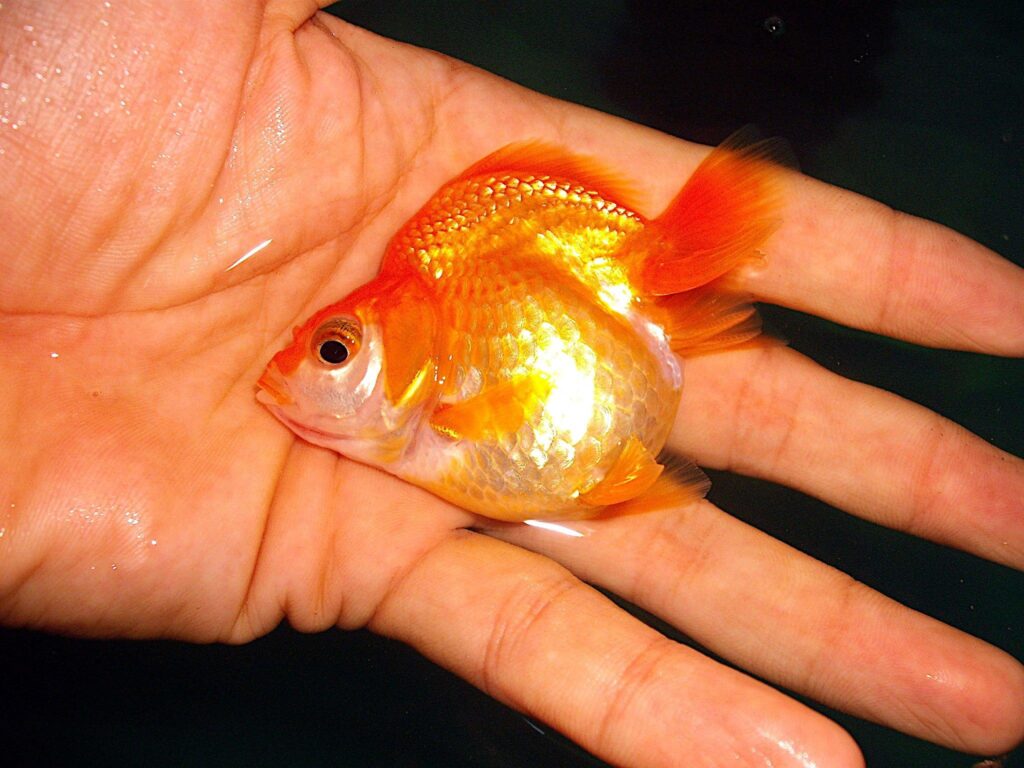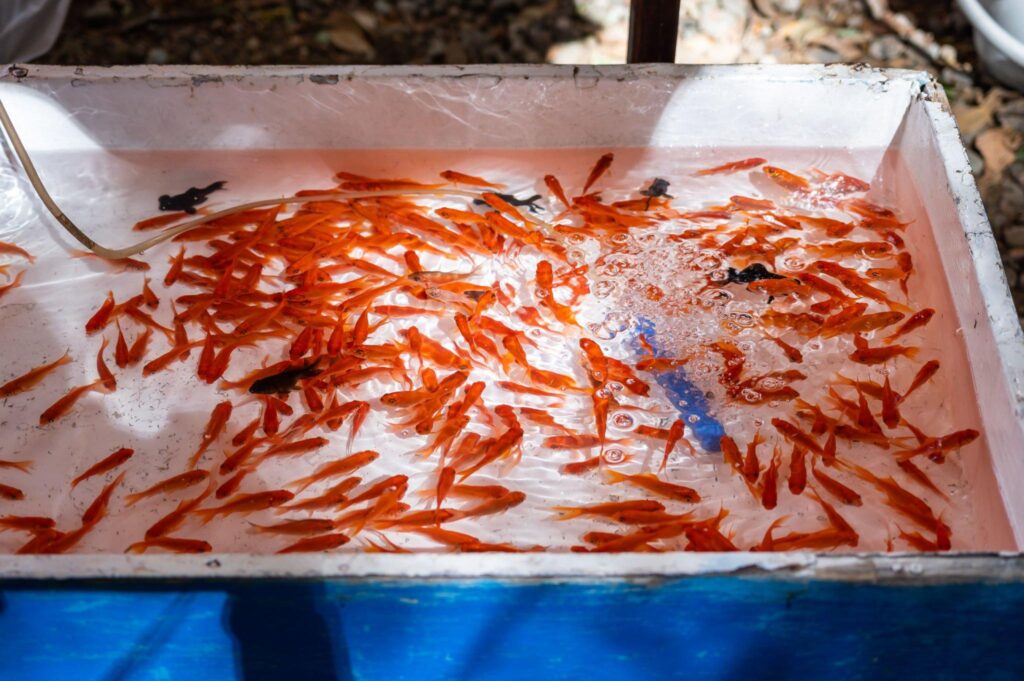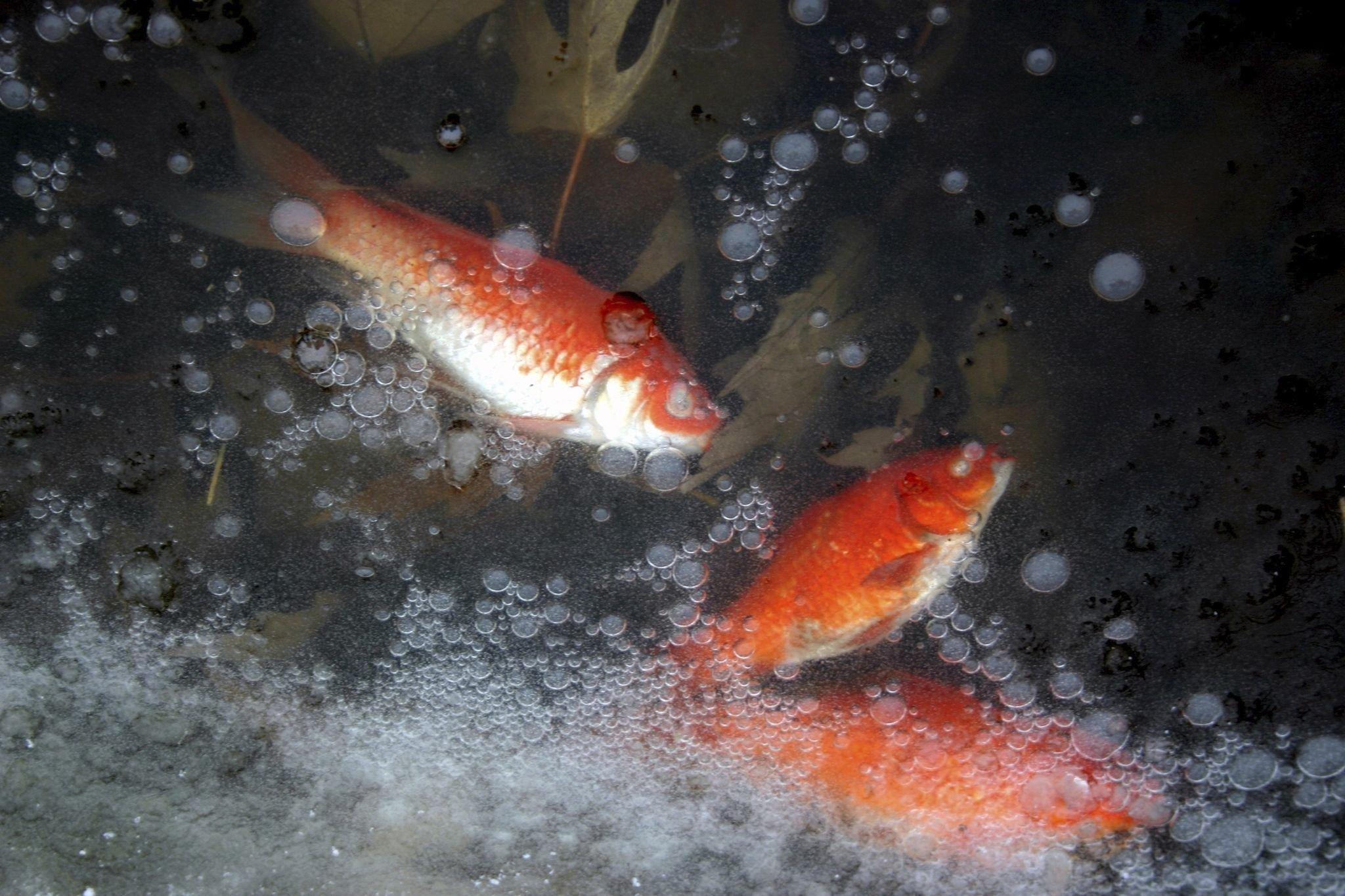Welcome to the complete guide to goldfish care! In this comprehensive article, we will walk you through everything you need to know about keeping your goldfish happy and healthy. Whether you are a beginner or an experienced goldfish owner, this guide is packed with valuable information and tips.
Choosing the right tank and equipment for goldfish
When it comes to choosing the right tank for your goldfish, size matters. Goldfish require ample space to swim and grow, so it’s important to provide them with a tank that is large enough to accommodate their needs. A good rule of thumb is to allow for at least 20 gallons of water per goldfish. This will give them enough room to swim freely and reduce the risk of stunted growth.
“A goldfish is not just a pet; it’s a silent companion on your journey through the currents of life.”
In addition to size, the shape of the tank is also important. Goldfish prefer a wide and shallow tank rather than a tall one, as they tend to swim horizontally rather than vertically. A tank with a wide surface area will provide them with more oxygen and allow for better gas exchange.
When it comes to equipment, you will need a reliable filter to keep the water clean and free from harmful toxins. Goldfish produce a lot of waste, so a filter with a high flow rate is essential. Additionally, a heater may be necessary to maintain a stable water temperature, especially if you live in a region with extreme weather conditions.
Remember to decorate the tank with non-toxic plants and ornaments. Goldfish enjoy having hiding spots and places to explore. Just be sure to choose decorations that won’t harm or injure your goldfish.
Setting up the perfect goldfish habitat
Now that you have chosen the right tank and equipment, it’s time to set up the perfect goldfish habitat. Start by thoroughly rinsing the tank and removing any dust or debris. Fill the tank with dechlorinated water, making sure to leave enough space for your goldfish to swim comfortably.
“Water quality is to goldfish what the quality of thought is to humans. Essential.”
Next, it’s important to establish a nitrogen cycle in the tank. This process involves the growth of beneficial bacteria that help break down harmful ammonia and nitrites produced by your goldfish. To kick-start the nitrogen cycle, you can introduce a small number of starter fish or use a commercial product specifically designed to promote the growth of beneficial bacteria.
Once the nitrogen cycle is established, you can introduce your goldfish to their new home. Gently acclimate them to the water temperature by floating their bag in the tank for about 15 minutes before releasing them. Avoid sudden temperature changes, as this can stress your goldfish and weaken their immune system.
Maintaining a consistent lighting schedule is also important for goldfish. Aim for about 10-12 hours of light per day, and make sure to turn off the lights at night to allow them to rest. Avoid placing the tank in direct sunlight, as this can cause excessive algae growth and temperature fluctuations.
Remember to perform regular water changes to keep the tank clean and maintain optimal water quality. Aim for a 25% water change every two weeks, and use a water conditioner to remove chlorine and other harmful chemicals from tap water.
According to the American Society for the Prevention of Cruelty to Animals: https://www.aspca.org/, goldfish should be fed a high-quality diet that is specifically formulated for goldfish
Understanding goldfish diet and feeding tips
Feeding your goldfish a nutritious diet is crucial for their overall health and well-being. Goldfish are omnivores, which means they eat both plant and animal matter. A balanced diet should consist of a variety of foods to ensure they receive all the necessary nutrients.
“If you think feeding your goldfish is a mundane task, then you’ve never looked into their eyes and seen the ocean.”
A high-quality commercial goldfish pellet or flake food should serve as the staple of their diet. Look for a product specifically formulated for goldfish, as it will contain the right balance of protein, carbohydrates, and vitamins. Avoid overfeeding your goldfish, as this can lead to obesity and other health issues. A good rule of thumb is to feed them small amounts two to three times a day, only giving them what they can consume within a few minutes.
In addition to dry food, it’s important to incorporate fresh vegetables into their diet. Goldfish enjoy nibbling on blanched peas, lettuce, and spinach. These vegetables provide essential fiber and help prevent constipation. Just make sure to remove any uneaten vegetables from the tank to prevent water quality issues.
You can also offer your goldfish small amounts of live or frozen food as an occasional treat. Bloodworms, brine shrimp, and daphnia are all excellent choices. These foods are high in protein and mimic their natural diet in the wild. However, be cautious not to overfeed them with these treats, as they can be high in fat.
Maintaining water quality for happy and healthy goldfish

Maintaining optimal water quality is crucial for the health and well-being of your goldfish. Poor water conditions can lead to stress, disease, and even death. Here are some key factors to consider when it comes to water quality:
- Temperature: Goldfish prefer a water temperature between 68-74°F (20-23°C). Avoid sudden temperature fluctuations, as this can stress your goldfish and weaken their immune system. Use a reliable heater to maintain a stable water temperature.
- pH Level: Goldfish thrive in a pH range of 6.5-7.5. Regularly test the pH level of your tank using a water testing kit. If the pH level is outside the recommended range, you can make adjustments using pH buffers or additives specifically designed for aquarium use.
- Ammonia and Nitrite Levels: Ammonia and nitrites are toxic to goldfish. These substances are produced by fish waste, uneaten food, and decaying plant matter. To keep ammonia and nitrite levels in check, make sure to perform regular water changes and keep your tank properly filtered. A properly cycled tank with a good filter will help in breaking down these harmful substances.
- Nitrate Levels: Nitrate is the end product of the nitrogen cycle and is less harmful to goldfish than ammonia and nitrites. However, high nitrate levels can still be detrimental to their health. Regular water changes will help keep nitrate levels under control. Aim to keep nitrate levels below 40 ppm (parts per million).
- Chlorine and Chloramine: Tap water often contains chlorine and chloramine, which are harmful to goldfish. Always use a water conditioner when adding tap water to your tank. Water conditioners neutralize chlorine and chloramine, making the water safe for your goldfish.
“A goldfish doesn’t merely float; it dances to the silent music of its aquatic world.”
Remember to regularly test your water parameters using a reliable water testing kit. This will help you identify any issues and take appropriate action before they become a problem.
Common goldfish health issues and how to prevent them
Goldfish are generally hardy and resilient, but they are still prone to certain health issues. Being aware of common health problems and knowing how to prevent them is key to keeping your goldfish healthy. Here are some common health issues to watch out for:
- Swim bladder disorder: Swim bladder disorder affects a goldfish’s ability to control its buoyancy. This can cause them to float to the top or sink to the bottom of the tank. To prevent swim bladder disorder, avoid overfeeding your goldfish and provide them with a balanced diet. Feeding them sinking pellets or peas can also help.
- Ich (White Spot Disease): Ich is a parasitic infection that appears as small white spots on the body and fins of goldfish. To prevent ich, maintain good water quality and avoid introducing new fish without proper quarantine. If your goldfish does develop ich, there are over-the-counter treatments available that can help.
- Fin rot: Fin rot is a bacterial infection that causes the fins to deteriorate and appear ragged. To prevent fin rot, maintain clean water conditions and provide your goldfish with a stress-free environment. If fin rot does occur, it can usually be treated with over-the-counter medications.
- Dropsy: Dropsy is a condition characterized by bloating, raised scales, and a pinecone-like appearance. It is often caused by poor water quality and bacterial infections. To prevent dropsy, maintain optimal water conditions and avoid overcrowding your tank. If dropsy does occur, it is important to address the underlying cause and seek appropriate treatment.
“Goldfish might forget, but the waters remember. Keep them clean.”
Regular observation and attentive care can help identify any health issues early on. If you notice any changes in behavior, appetite, or physical appearance, it is important to take action promptly.
Read Also: Fish Tank Catastrophes: What to Do if It Happens to You
Goldfish breeding and reproduction

Breeding goldfish can be a rewarding experience, but it requires careful planning and preparation. Here are some key factors to consider if you’re interested in breeding goldfish:
- Gender identification: Goldfish have external reproductive organs, making it relatively easy to identify their gender. Males typically have white spots, called tubercles, on their gill covers and pectoral fins during the breeding season. Females, on the other hand, have a rounder and fuller body shape.
- Spawning behavior: Goldfish breed by laying eggs, which are then fertilized by the males. The female will release eggs, and the male will release milt to fertilize them. The eggs will then attach to plants or other surfaces in the tank. It is important to provide suitable spawning materials, such as spawning mops or plants, for the eggs to adhere to.
- Separating breeders: To encourage successful breeding, it is recommended to separate the males and females for a period of time. This separation mimics natural breeding conditions and allows the fish to develop their reproductive capabilities.
- Raising fry: Once the eggs have been fertilized, they will hatch within a few days. At this point, it is important to separate the fry from the adult fish, as they may eat the eggs or newly hatched fry. Provide the fry with a separate tank or breeding net and feed them a specialized fry food or crushed flakes.
“The curve of a goldfish’s fin is the universe’s secret smile.”
Breeding goldfish can be a complex process, and it is important to do thorough research and seek guidance from experienced breeders before attempting it.
Tips for handling and interacting with goldfish
While goldfish may not be as interactive as other pets, they can still provide enjoyment and companionship. Here are some tips for handling and interacting with your goldfish:
- Avoid overhandling: Goldfish have a delicate slime coat that protects their skin. Excessive handling can damage this protective layer and make them more susceptible to diseases. Limit handling to when necessary, such as during tank maintenance or when moving them to a new tank.
- Hand-feeding: Hand-feeding your goldfish can help build trust and create a bond between you and your fish. Use your fingertips to gently offer them food and observe their behavior up close.
- Enrichment activities: Goldfish may not require as much mental stimulation as other pets, but providing them with enrichment activities can still enhance their well-being. Place floating toys or objects in the tank for them to interact with, or rearrange the tank decor occasionally to keep things interesting.
“To gaze upon a goldfish is to accept an invitation to tranquility, and to ignore one is to decline the wisdom of the waters.”
Remember, goldfish have their own unique personalities, and some may be more interactive than others. Observe their behavior and adjust your interactions accordingly.
Frequently asked questions about goldfish care
Q: Can goldfish live in a bowl? A: Goldfish require a tank that provides ample space and proper filtration. Keeping them in a bowl can lead to stunted growth and poor water conditions.
Q: How long do goldfish live? A: With proper care, goldfish can live for several years and even decades. Some varieties, such as the common goldfish, can live up to 20 years or more.
Q: Can goldfish live with other fish? A: Goldfish can be kept with other goldfish, but they may not be compatible with all types of fish. Avoid keeping them with aggressive or fin-nipping species.
Q: Do goldfish need a heater? A: Goldfish can tolerate a wide range of temperatures, but they prefer a stable water temperature between 68-74°F (20-23°C). In regions with extreme weather conditions, a heater may be necessary to maintain a stable temperature.
Q: How often should I clean my goldfish tank? A: Regular water changes and tank maintenance are important for maintaining optimal water quality. Aim for a 25% water change every two weeks and use a gravel vacuum to remove debris from the substrate.
Conclusion and final thoughts on goldfish care
Goldfish care requires a combination of knowledge, effort, and dedication. By providing them with the right tank, equipment, and diet, as well as maintaining optimal water conditions, you can ensure your goldfish live a long and healthy life.
Remember to observe your goldfish regularly and be proactive in addressing any health issues that may arise. With proper care and attention, your goldfish can bring beauty and joy to your home for years to come.
We hope this complete guide to goldfish care has equipped you with the knowledge and tools to become a goldfish care expert. Whether you’re a beginner or an experienced goldfish owner, we wish you success in creating a comfortable and thriving environment for your goldfish. Happy fishkeeping!

